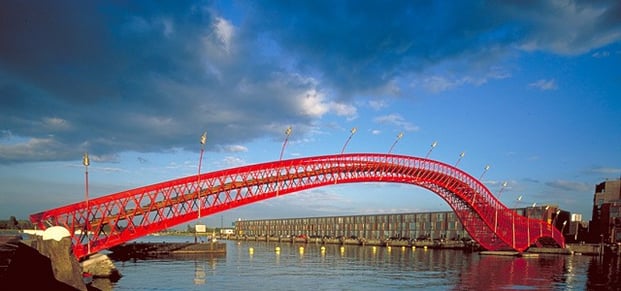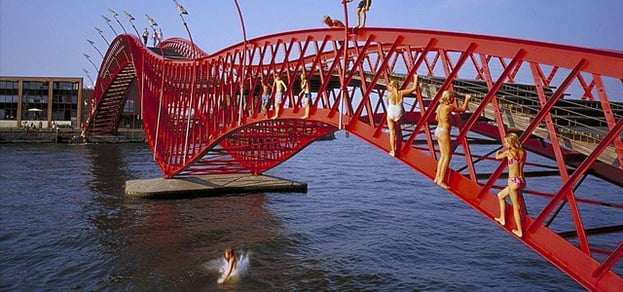
This week, in our blog series on unique bridges, we're going back to the Netherlands. Amsterdam has a great number of bridges (over 1,200 to be exact) thanks to the various waterways twisting throughout the city. It's also one of the most pedestrian-friendly cities in the world, with thousands of cyclists and pedestrians navigating the city every day. Therefore, pedestrian bridges are a necessary architectural element for the city and its residents.
Amsterdam contains many innovative and artistic architectural elements, so it's not surprising that they have some amazing pedestrian bridges. One of the more unusual pedestrian bridges in Amsterdam is the Python Bridge, also known as High Bridge. This bridge, which spans the canal between Sporenburg and Borneo Island, is named for its snake-like shape. The bridge was built in 2001 and won the International Footbridge Award in 2002. The steel structure spans almost 300 feet, and you'll often see local children jumping off the sides of the bridge into the water below (see photo below).

The Python Bridge is actually part of a three-bridge complex, designed by award-winning urban design and landscape architecture firm West 8. West 8 explains the role of the three bridges:
The three bridges of Borneo/Sporenburg by West 8 play an essential role at the creation of the unique atmosphere in the harbour-residential area. Two of the bridges, one on the West side and the other on the East side, span the 93-meter wide water of the Railroad basin and connect the islands of Borneo and Sporenburg. The third bridge is situated in the line of the East bridge and spans the 25-meter wide inland port.
So, the next time you're in Amsterdam, be sure to stop by the Python Bridge - and dare to jump into the water below.

